4.10.2024
China to launch new crew to space station this month
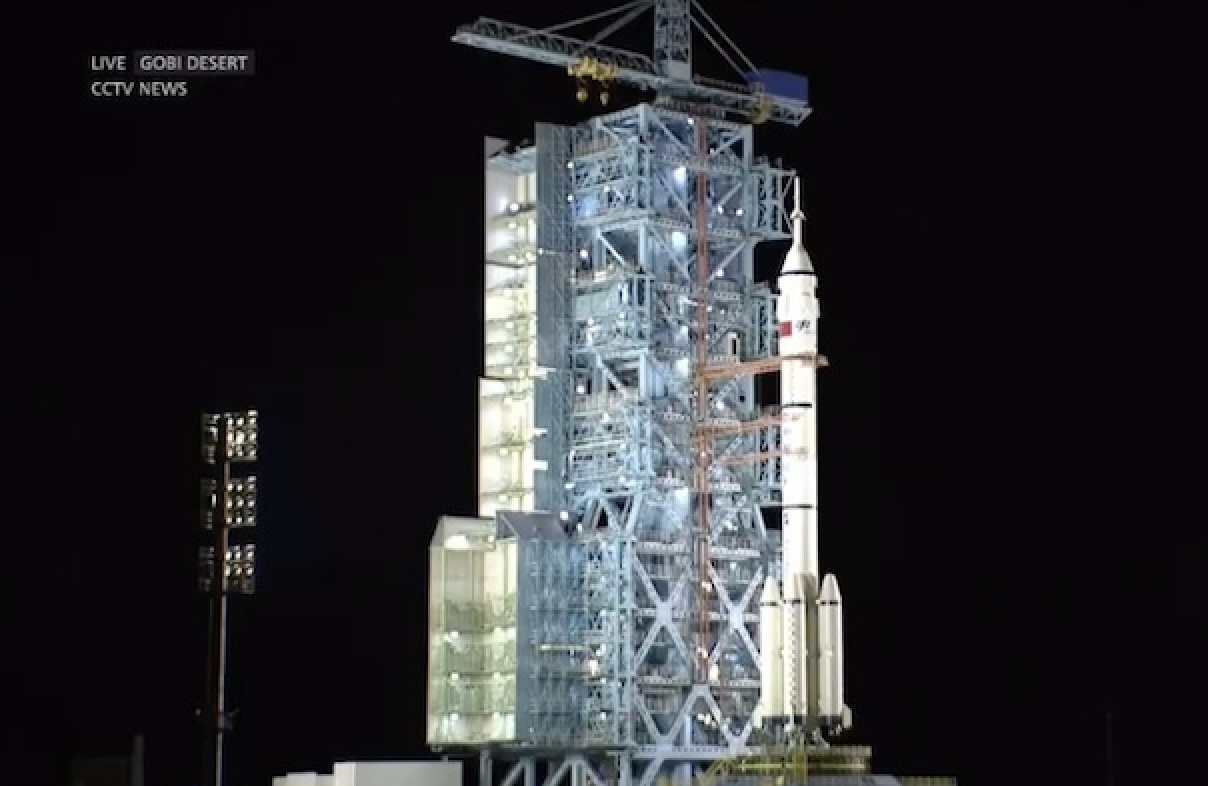
China is scheduled to launch the Shenzhou-19 crewed spaceship and welcome the Shenzhou-18 taikonauts back to Earth in late October, according to the China Manned Space Agency.
According to the agency's October mission plan released this week, the Shenzhou-18 crew, who are on board China's orbiting Tiangong space station, will complete their six-month space mission this month and embark on the journey back.
The Shenzhou-18 crew consists of three male taikonauts -- Ye Guangfu, Li Cong and Li Guangsu. The crew was launched into space on April 25.
During the week-long National Day holiday, the Shenzhou-18 crew is striving to maintain a regular, orderly work-life balance. However, their time is mostly occupied by a heavy workload, including scientific experiments, data collection, and preparation for the arrival of the new crew and handover work.
According to recent footage released by the China Media Group, the three Shenzhou-18 taikonauts expressed their excitement for the upcoming "reunion" in the space station. They said they would clean up the "rooms," prepare "reunion meals," and make sure the newcomers "feel at home."
Quelle: Xinhua
----
Update: 23.10.2024
.
China prepares to launch Shenzhou-19 crewed spaceship

This photo taken on Oct. 22, 2024 shows the combination of the Shenzhou-19 crewed spaceship and a Long March-2F carrier rocket being transferred to the launch area.
The combination has been transferred to the launch area, the China Manned Space Agency (CMSA) said on Tuesday.
According to the CMSA, facilities and equipment at the launch site are in good condition, while various pre-launch function checks and joint tests will be carried out as planned.
The spaceship will be launched at an appropriate time in the near future, the CMSA said. (Photo by Wang Jiangbo/Xinhua)
The combination of the Shenzhou-19 crewed spaceship and a Long March-2F carrier rocket has been transferred to the launch area, the China Manned Space Agency (CMSA) said on Tuesday.
According to the CMSA, facilities and equipment at the launch site are in good condition, while various pre-launch function checks and joint tests will be carried out as planned.
The spaceship will be launched at an appropriate time in the near future, the CMSA said.

This photo taken on Oct. 22, 2024 shows the combination of the Shenzhou-19 crewed spaceship and a Long March-2F carrier rocket being transferred to the launch area. The combination has been transferred to the launch area, the China Manned Space Agency (CMSA) said on Tuesday. According to the CMSA, facilities and equipment at the launch site are in good condition, while various pre-launch function checks and joint tests will be carried out as planned. The spaceship will be launched at an appropriate time in the near future, the CMSA said. (Photo by Wang Jiangbo/Xinhua)
Quelle: Xinhua
----
Update: 29.10.2024
.
China to send 14th crewed mission to space on Shenzhou-19
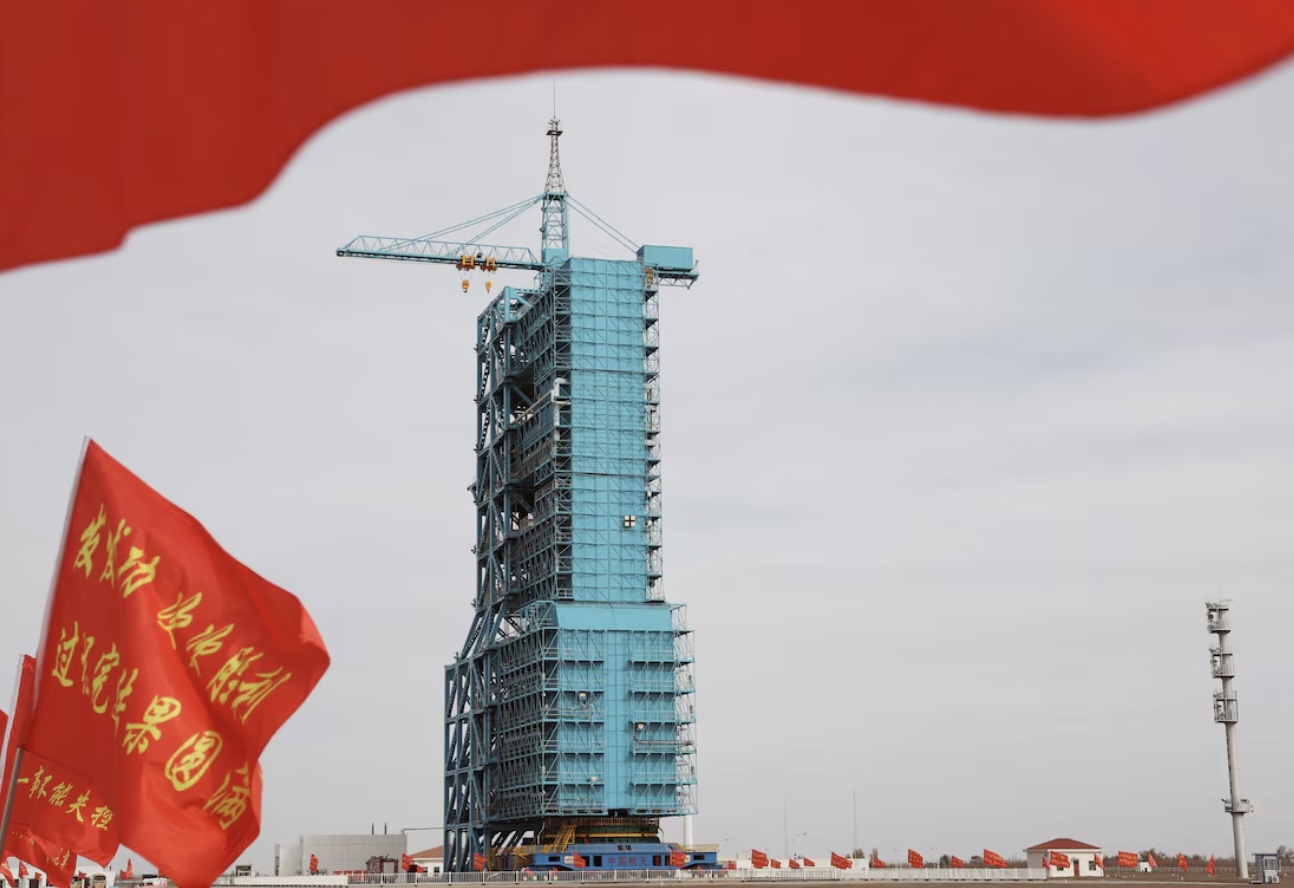
China unveils Shenzhou-19 crew for space station mission
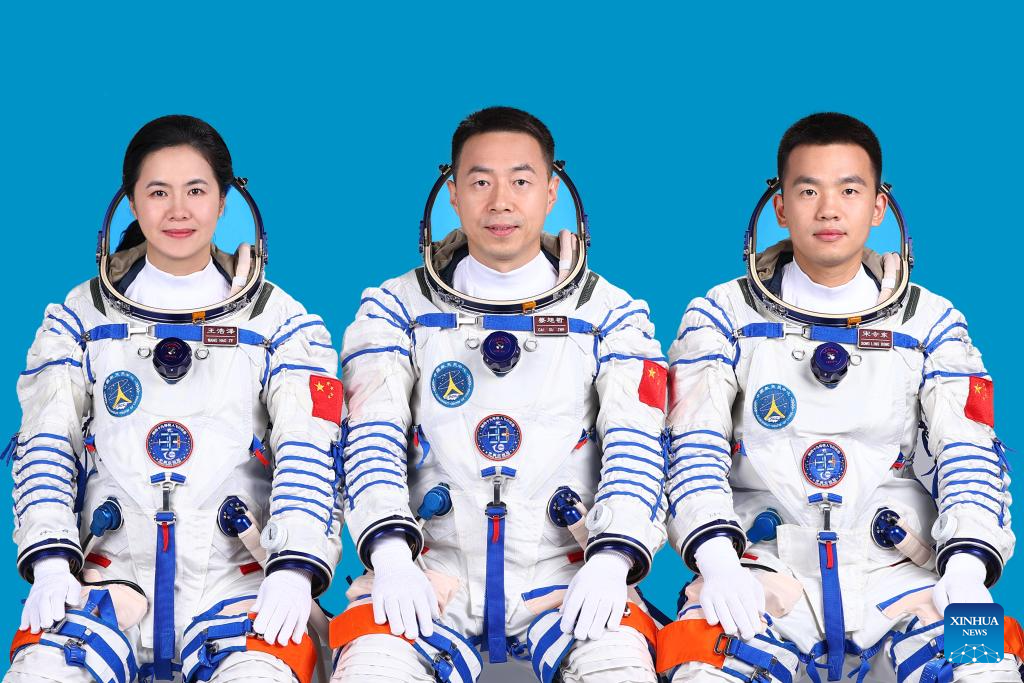
This photo shows Chinese astronauts Cai Xuzhe (C), Song Lingdong (R) and Wang Haoze who will carry out the Shenzhou-19 spaceflight mission. Chinese astronauts Cai Xuzhe, Song Lingdong and Wang Haoze will carry out the Shenzhou-19 crewed spaceflight mission, and Cai will be the commander, the China Manned Space Agency announced at a press conference on Tuesday. (Xinhua)
Chinese astronauts Cai Xuzhe, Song Lingdong and Wang Haoze will carry out the Shenzhou-19 crewed spaceflight mission, and Cai will be the commander, the China Manned Space Agency (CMSA) announced at a press conference on Tuesday.
Lin Xiqiang, spokesperson of the agency, said the Shenzhou-19 crewed spaceship is scheduled to be launched at 4:27 a.m. Wednesday (Beijing Time) from the Jiuquan Satellite Launch Center in northwest China.
Cai completed the Shenzhou-14 space mission in 2022. Song and Wang, among the third batch of Chinese astronauts, are newcomers to space. Both of them were born in the 1990s.
Song was a former air force pilot before being selected as an astronaut, and Wang previously served as a senior engineer at the Academy of Aerospace Propulsion Technology under the China Aerospace Science and Technology Corporation.
Wang is currently China's only female space flight engineer and will become the third Chinese woman to embark on a crewed spaceflight mission, the agency noted.
The Shenzhou-19 astronauts will complete an in-orbit rotation with the Shenzhou-18 trio and stay at the space station, Tiangong, for approximately six months. During the mission, they will witness the arrival of the Tianzhou-8 cargo craft and Shenzhou-20 crewed spaceship.
Talking about his upcoming return journey to space, Cai, the 48-year-old commander, said that the bustling space life during his previous mission remains vivid.
From a space rookie in the Shenzhou-14 trio to now the leader of the Shenzhou-19 crew, Cai said he felt proud and had a greater sense of responsibility. He pledged to work with his colleagues to do their best to enhance operational quality and emergency response capabilities.
The new crew will have many tasks to complete, including conducting space science and application tests, performing extravehicular activities, installing protective devices against space debris, and installing and recycling extravehicular payloads and equipment. They will also engage in science education, public welfare activities, and other payload tests.
"The safety of astronauts is always the top concern for the governments and people around the world," the CMSA spokesperson said, adding that China also paid close attention to the delayed return of two American astronauts remaining at the International Space Station.
"We extend our best wishes for the safe return of the two astronauts," Lin said.
He emphasized that China has continuously enhanced its emergency response plan for potential threats like space debris. The time available for astronauts to respond to emergencies has now increased by five times compared to the early operation phase of China's space station.
According to Lin, in extreme situations, astronauts onboard the space station have two options for returning: either they can return using in-orbit spacecraft or wait for the launch of the standby spacecraft for emergency rescue.
The Shenzhou-19 astronauts are scheduled to return to the Dongfeng landing site in north China's Inner Mongolia Autonomous Region in late April or early May next year, according to the CMSA.
Quelle: Xinhua
----
Update: 30.10.2024
.
China launches Shenzhou-19 crew for 6-month stay on space station
China has launched a new three-person crew to its space station, including a commander making his second visit to the orbiting laboratory and the only female flight engineer currently in China's astronaut corps.
Cai Xuzhe, Song Lingdong and Wang Haoze lifted off on the Shenzhou-19 mission on Tuesday (Oct. 29). The three Chinese taikonauts took flight at 4:27 p.m. EDT (2027 GMT or 4:27 a.m. on Oct. 30 Beijing Time) atop a Long March-2F carrier rocket from the Jiuquan Satellite Launch Center in northwest China.
Cai, Song and Wang are expected to arrive at the Tiangong ("Heavenly Palace") space station after about a six and a half hour rendezvous. Once docked to the three-module complex, the Shenzhou 19 crew will join Shenzhou 18 taikonauts Ye Guangfu, Li Cong and Li Guangsu for a brief time — the fifth direct handover in China's history.
Ye, Li and Li, who have been aboard the station since April, will then depart the space station to return to Earth, leaving Cai, Song and Wang to staff Tinagong for the next six months.
During their stay, the Shenzhou 19 crew are scheduled to conduct 86 science experiments and technology demonstrations, with a particular focus on biological and physical science research. In addition to growing protein crystals and studying the non-equilibrium dynamics of soft matter in the microgravity environment of space, Cai, Song and Wang will also work with bricks made from simulated lunar soil as a potential material for constructing habitats on the moon.
The bricks will arrive on the Tianzhou-8 cargo spacecraft during the Shenzhou 19 mission and be returned to Earth for analysis by the end of 2025.
"[My] last mission took place during the construction phase of the space station, which as developed from a single-module structure into a T-shape configuration of three modules. Our [Shenzhou 19] spaceflight marks the entry of the space station into the application and development phase," said Cai an interview with China Central Television. "During this phase, many new experiments and projects have been added to our mission, some of which are quite distinctive and interesting."
"Therefore, I very much look forward to the experimental projects," said Cai.
Cai, 48, previously logged 182 days as the system and science officer on the Shenzhou-14 crew in 2022. A member of China's second group of taikonauts, he has also performed two spacewalks to date, helping to install equipment on the exterior of the Wentian laboratory module.
Cai's two crewmates are both from the third taikonaut group and first-time fliers.
Song, 34, was an air force pilot before joining the Chinese space program.
"Twenty-one years ago, at the age of 13, my classmates and I sat in front of the television, watching the successful launch of Shenzhou-5. Filled with awe, the seed of the dream to fly to space was sown," Song, referring to China's first human spaceflight with taikonaut Yang Liwei, said during a pre-launch press conference. "As a 'post-90' astronaut, I feel incredibly honored and proud to serve my country by undertaking the Shenzhou-19 mission."
Wang, 34, is China's third woman to fly into space after Liu Yang on Shenzhou-9 and Wang Yaping on Shenzhou-13. Wang (Haoze) previously designed rocket engines at the Academy of Aerospace Propulsion Technology under the China Aerospace Science and Technology Corporation.
"In the past, I worked on the design of the propellant and engine for rockets. Now I have a new identity, an astronaut," said Wang. "What has remained unchanged is my ambition to serve the country."
"I want to fly around in our 'space mansion' and experience the joy of weightlessness," she said. "I want to diligently complete every task and protect our 'space home.' I also wish to roam through the depths of space and wave to the stars. Above all, I want to catch a glimpse of my motherland that nurtured me."
In addition to their science and maintenance tasks, the Shenzhou 19 crew also plan to engage in science education outreach and public welfare activities. They will be in space for the Chinese New Year, or Spring Festival, for which the flight controllers has packed a surprise gift for the crew.
Shenzhou-19 is the 33rd mission of China's human space program, the 14th to fly with a crew, the 11th to include three taikonauts and the eighth to live on board the Tiangong space station.
Quelle: CS
+++


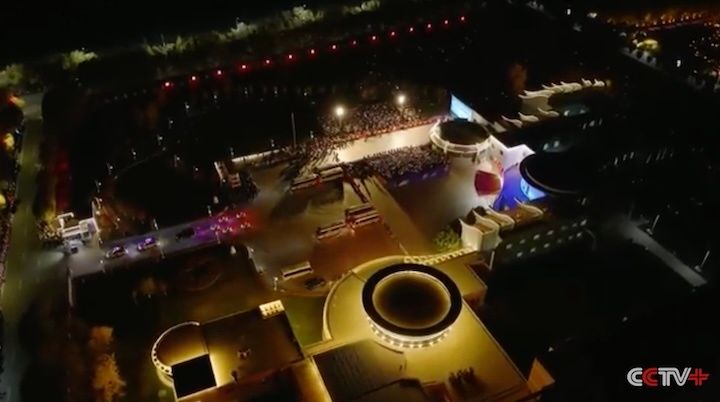
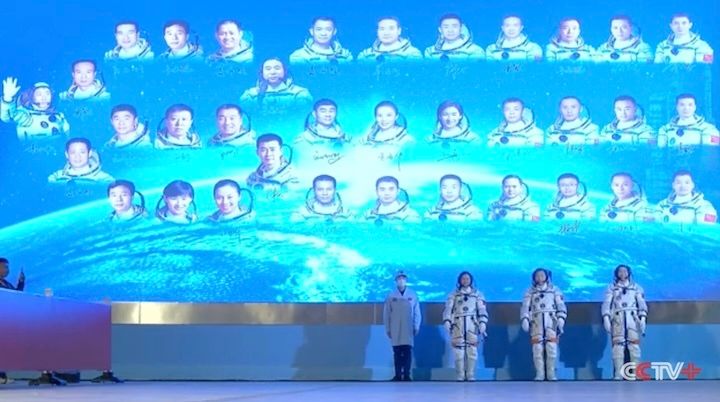
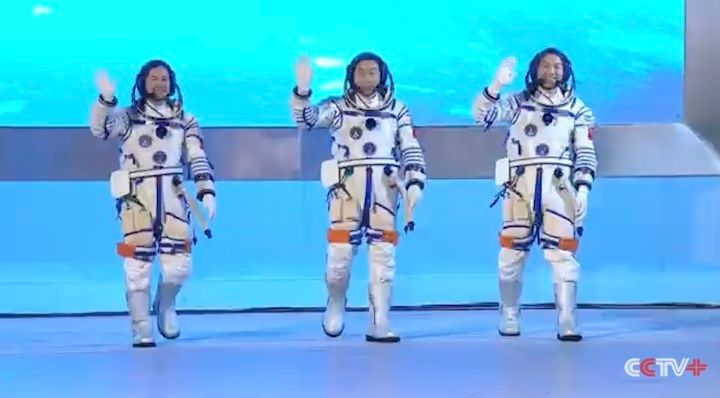
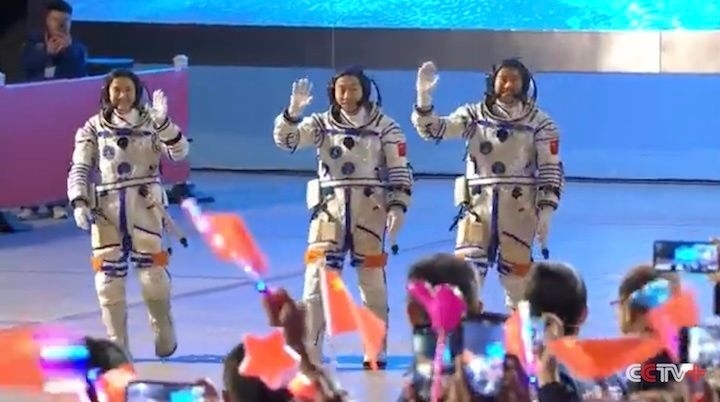
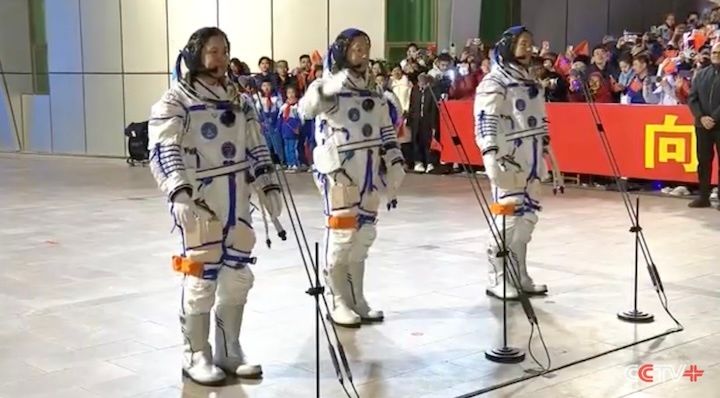
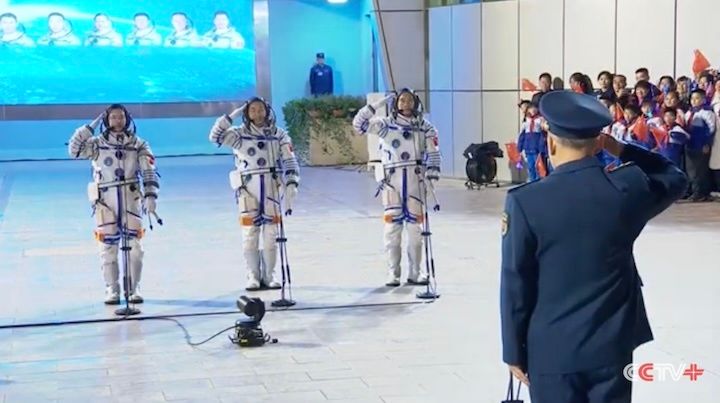
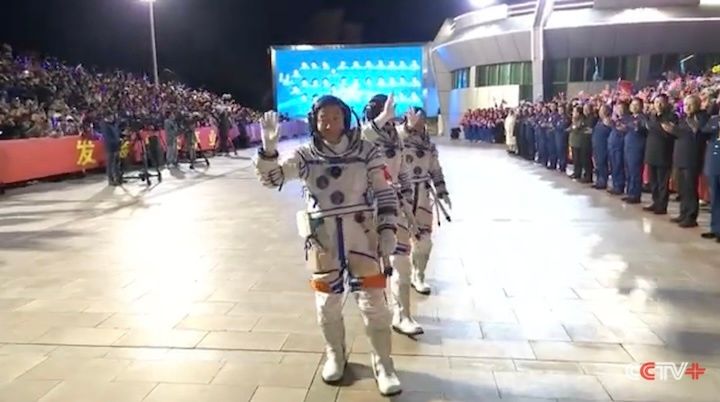
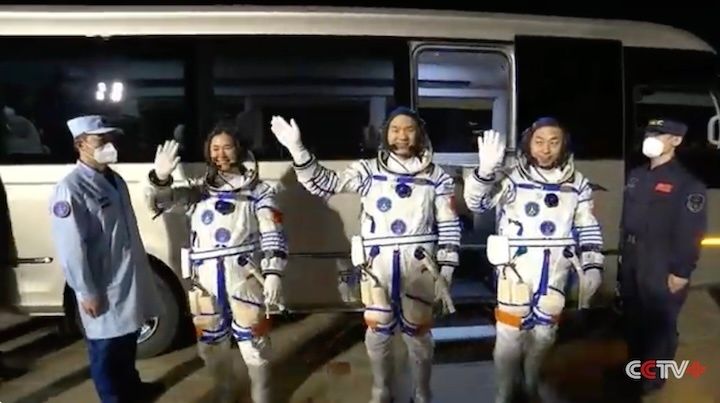
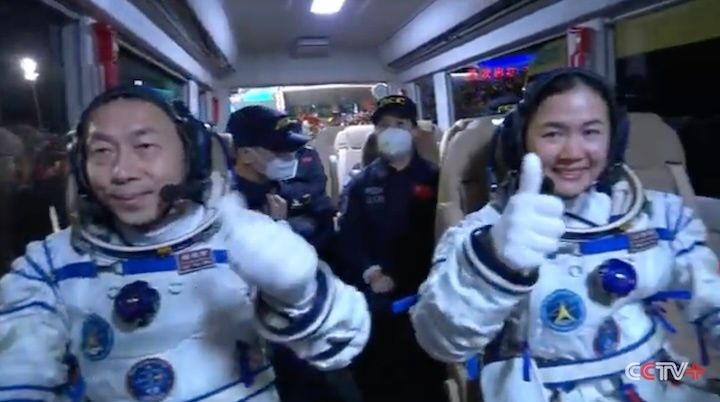

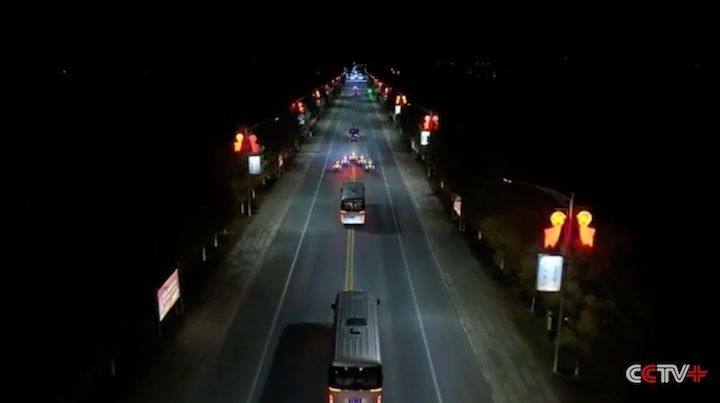
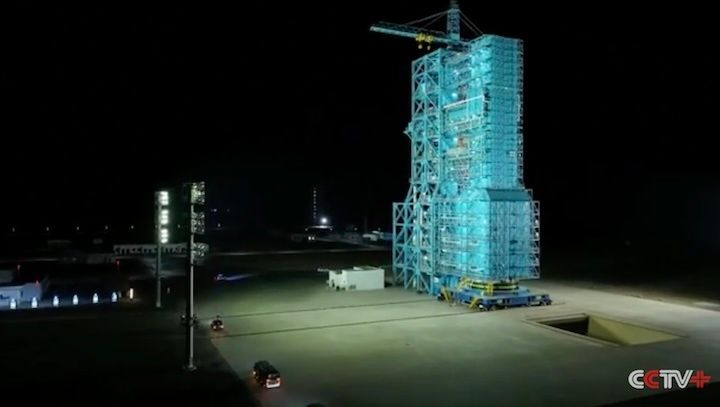
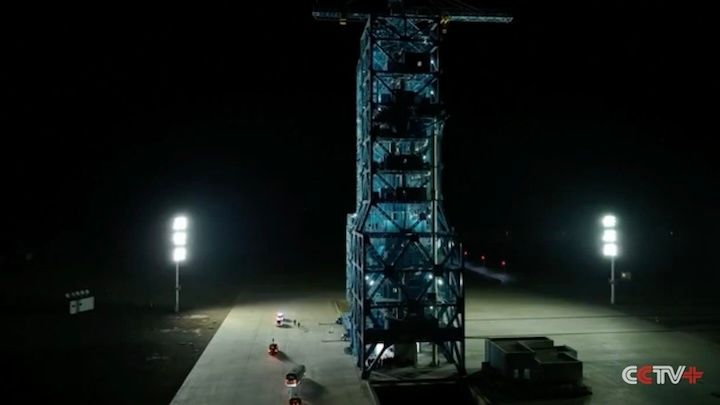
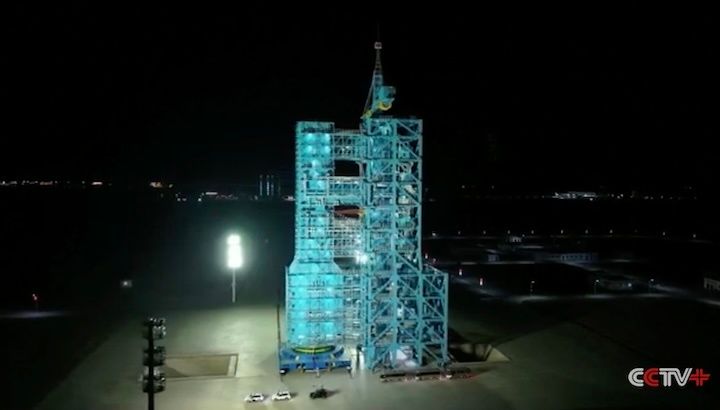
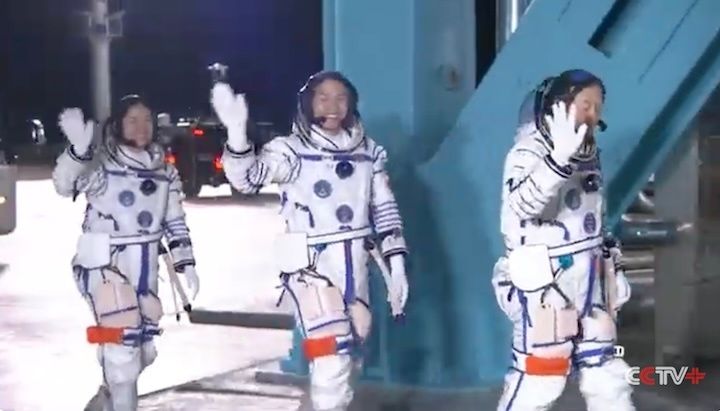
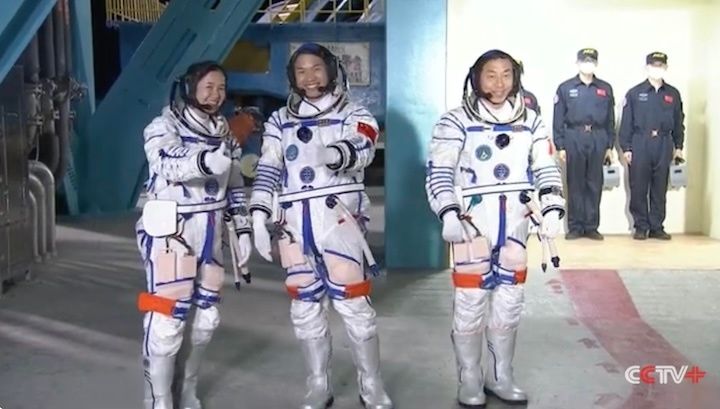
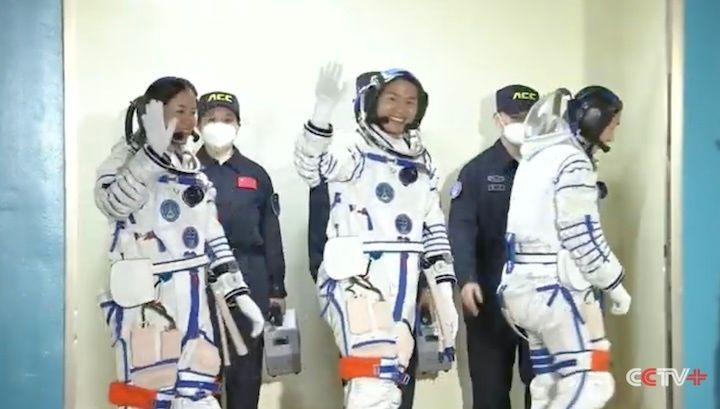
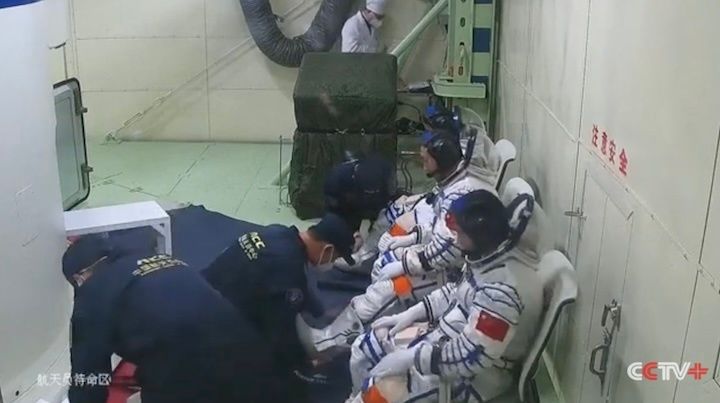
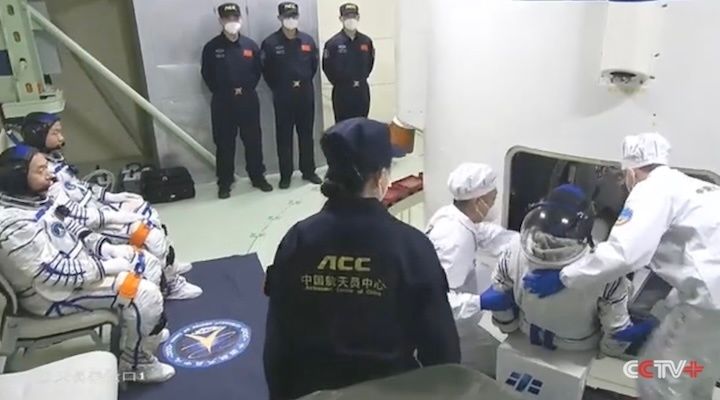

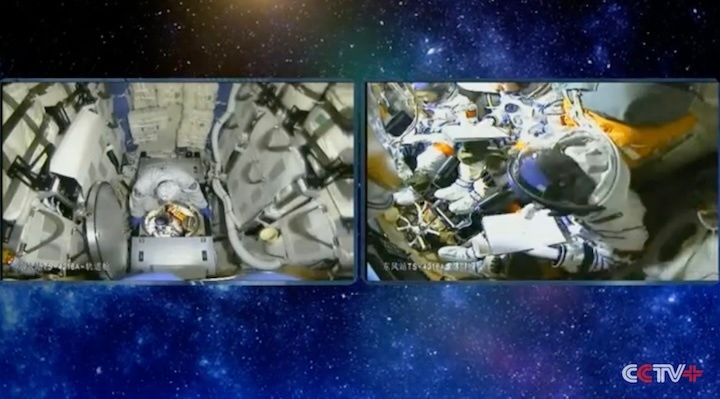


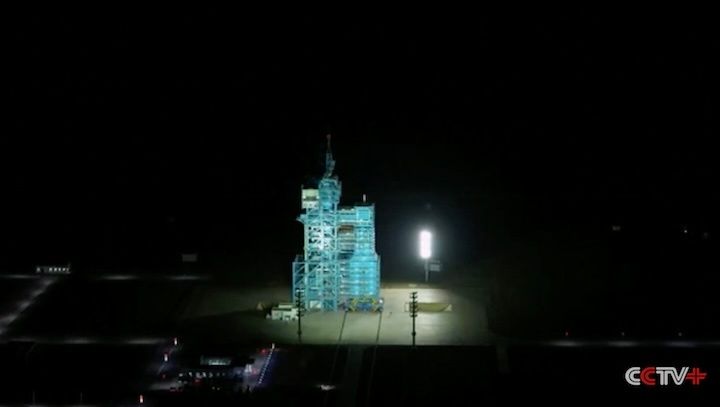
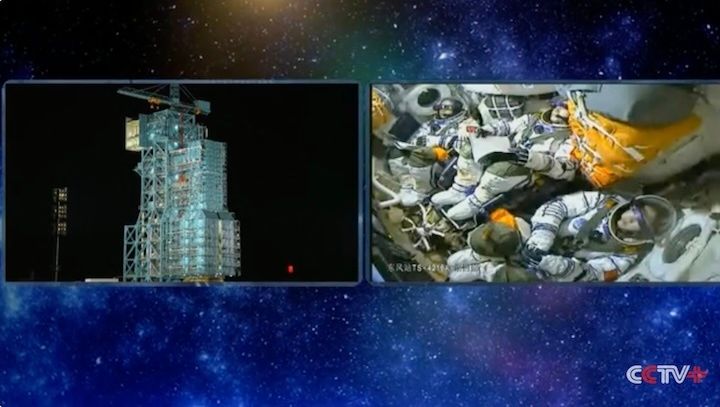
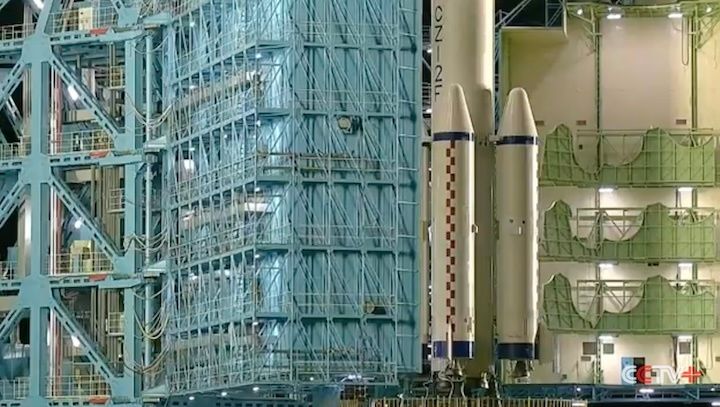
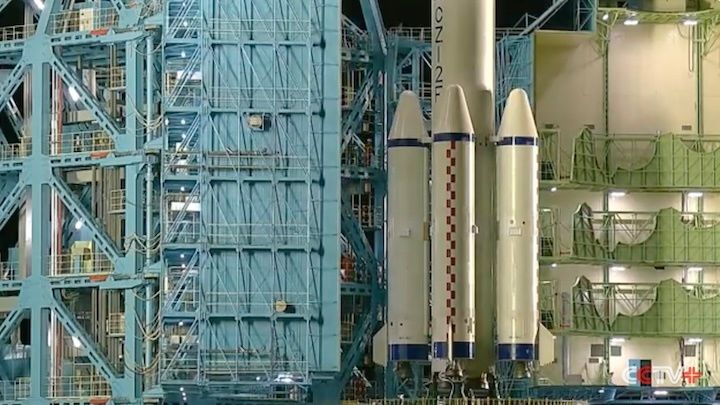
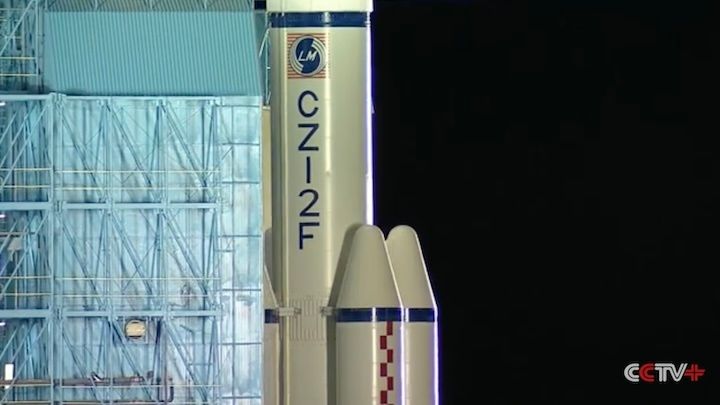
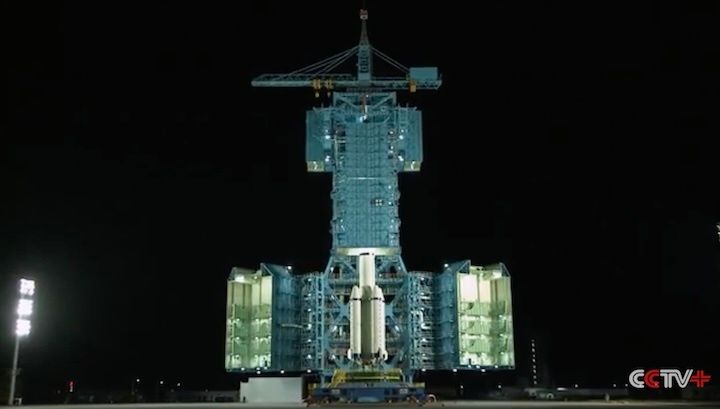
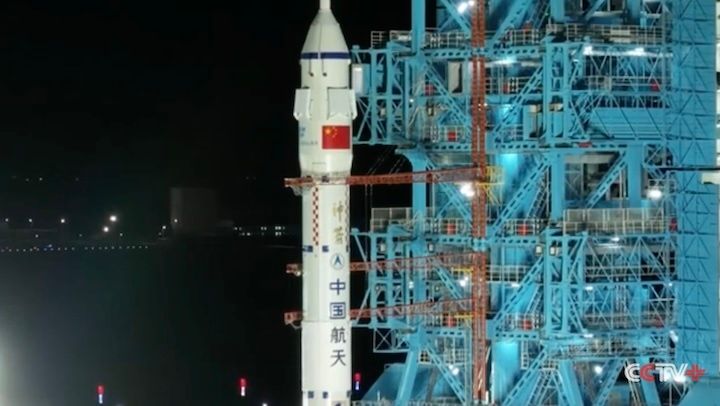
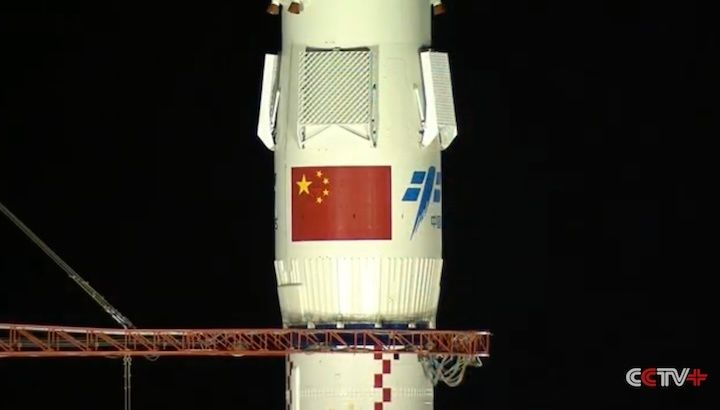
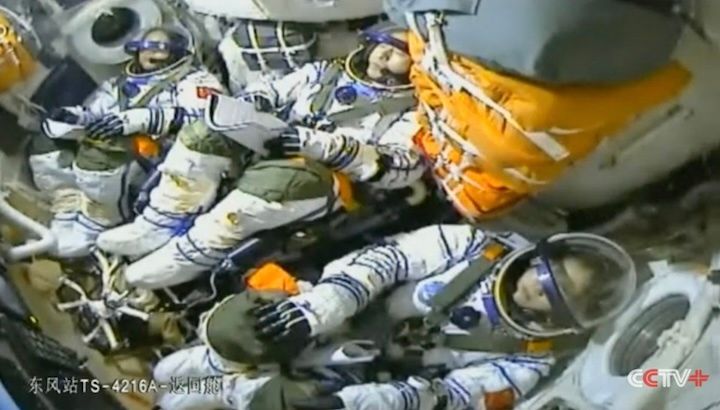
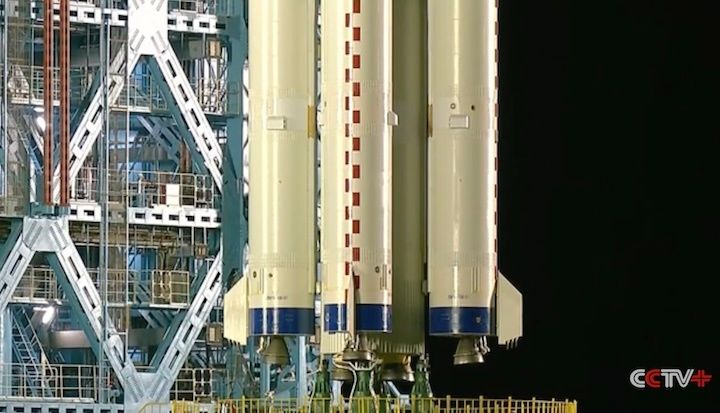
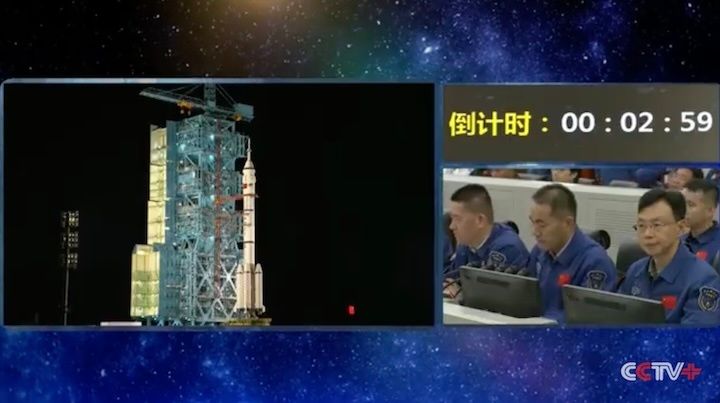
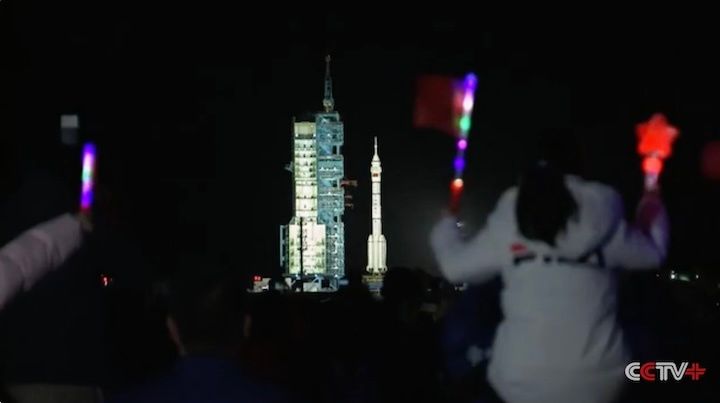
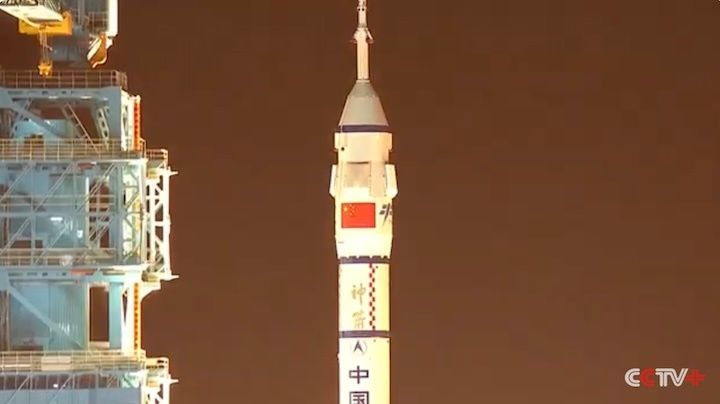
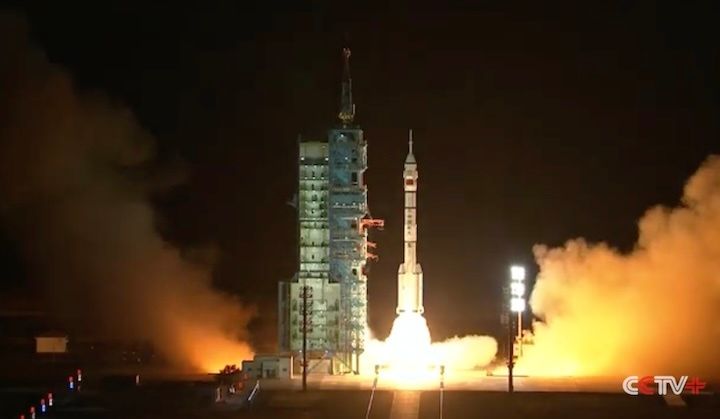
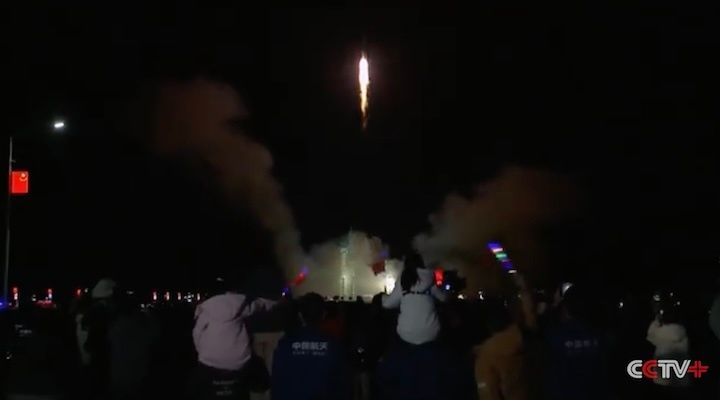
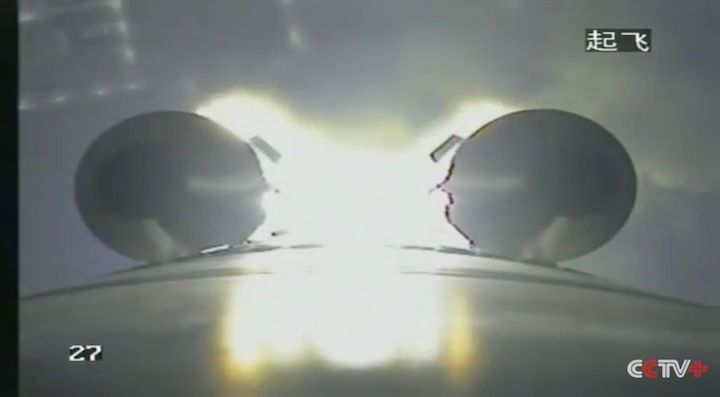
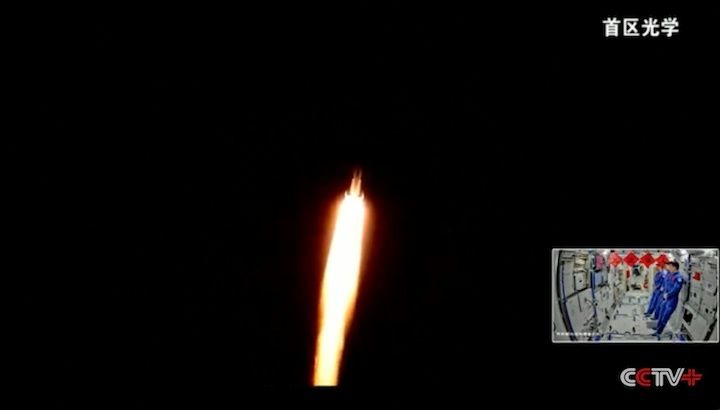
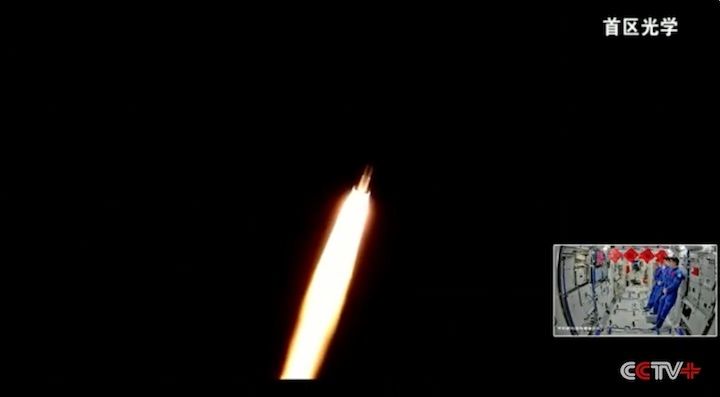

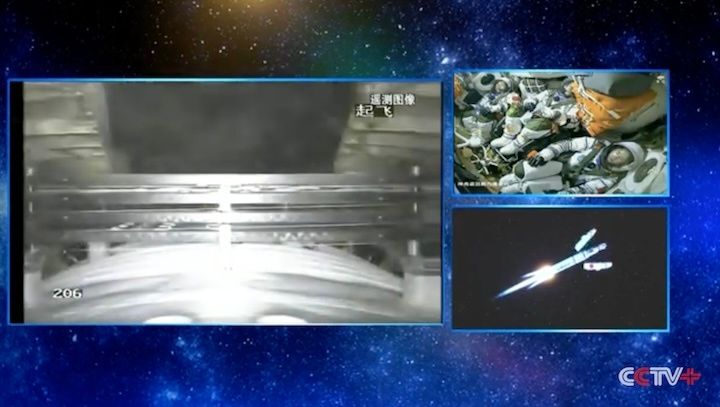
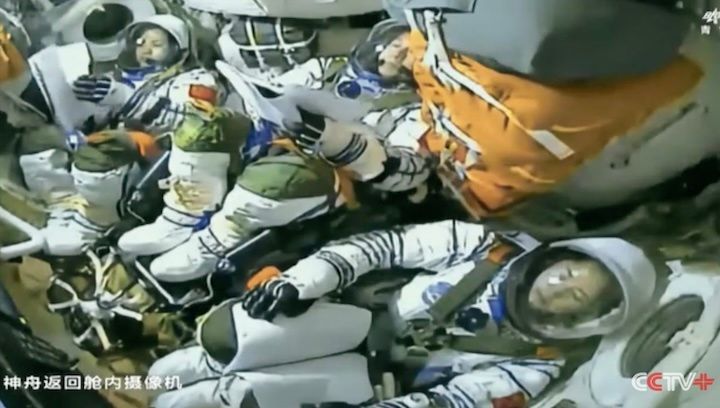

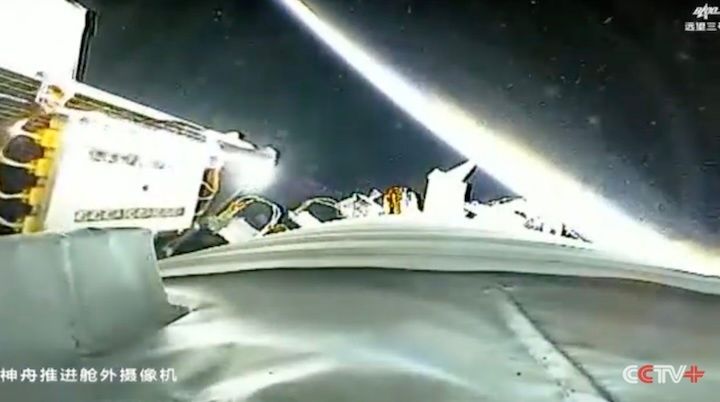
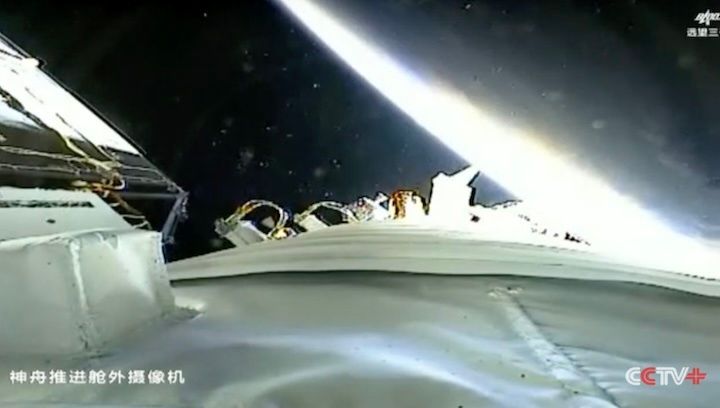


Quelle: CCTV
